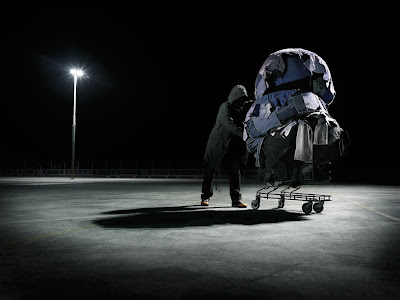Re-appropriation of the Macadamia Nut Shell
Husque is a composite material that uses ground up Macadamia shell left over from the Macadamia nut industry processors. The Macadamia shell is a by-product once the kernel has been removed for food or oil. I combine the shell with polymer that then allows me to mold forms. These forms are set with heat and then can be machined, polished and hand finished in various ways. I introduce colour into the shapes by lining the moulds before the composite material is injected.
If Husque can be compared to another material, an accurate one would be Bakelite. Particularly, electrical insulation Bakelite used commonly in the design of appliances from the 20s to 40s. That type of Bakelite was a composite of wood-flour and phenolic resin.
My understanding of sustainability is that it is ‘the clean and prolonged use of our existing resources and the pursuit of new resources that are safe and efficient’. Husque has developed a value adding process to a low valued by-product but the value of Husque is in the concept of innovation more than the product itself. Its arguable whether the production of more ‘things’ is indeed what the planet needs but it is clear that the processes to develop well designed product by hand or intuitive methods is grounding and can be an inspiration when life and the artifacts we surround ourselves with become overly complicated.
Husque is unique as it is a product more created from art than science. The idea of using Macadamia shell in this way came from my interest in the significance of cultural icons as signposting in an increasingly homogenizing international design scene, however, the idea of using this by-product in a new application had just as much interest from an eco hungry international movement.
Being conservative and innovative with materials is natural to me and goes back to having immigrant farmers as parents and being raised with in an alternative lifestyle family where as kids we made do with what we had. In my own practice I have translated this as a unique aspect of Australian, and New Zealand design where a philosophy of ‘getting things done’ is inherent in many local innovative design practices. Low-tech methods and lateral thinking are often platforms for innovation.
One of the key features in the manufacturing of Husque is its molded form, very little waste is generated as the material is measured precisely to fill the volume of the shape required. Besides from the design of vessels, there is a hopeful future for Husque to be used in jewelry, architectural fittings and as with the Husque jug, handles.
The Macadamia nut is native to Australia, and remained exclusively landlocked here on the East coast until 1880, Australia still produces 56% of the worlds Macadamia nuts.
Sustainability stories link
Marc Harrison is one of the top ten finalist in the 2011 Bombay Sapphire Awards website
Be In The Know for Sustainability Forum Updates Subscribe


































